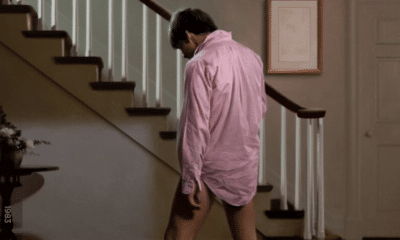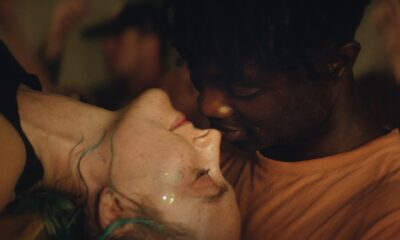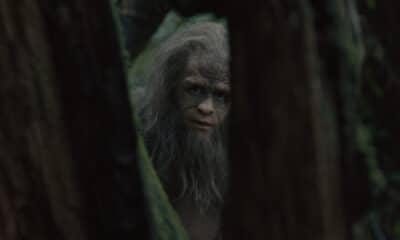As we march bravely on through 2013, THN will take a nostalgic yet critical look at the 53 Walt Disney Animated Classics, from SNOW WHITE to WRECK-IT RALPH, through the obscurity of FUN AND FANCY FREE to the Golden Age of BEAUTY AND THE BEAST. These are the films the Walt Disney company are most proud of, the ones that hold a special place in our hearts, the ones that still cost a fortune to buy on DVD.
This time, a little later than planned… it’s a twist on a Twist with OLIVER & COMPANY
OLIVER & COMPANY
1988/ 73 Minutes
Directed by George Scribner
By the early 1980s, Disney’s original braintrust of animators, the so-called “Nine Old Men”, had retired, bringing forth a new generation of animators, amongst them Don Bluth and Tim Burton, who would go on to find success beyond the House of Mouse’s walls.
This new guard brought with them new ideas and a new style, which wasn’t always successful; it took them a little while to find their own feet, and OLIVER & COMPANY would serve as a big step towards what would become the Disney Renaissance of the 1990s.
Originally, OLIVER & COMPANY was intended to be a sequel to THE RESCUERS, and would focus on young Penny’s life with her new adoptive parents, but that idea eventually fell through, and the film took on its own story. Well, sort of.
Once again, Disney raided the bookshelf, this time coming up with a new, modern spin on Charles Dickens’ seminal tale, Oliver Twist, transposing the tale to contemporary New York and making Oliver a lost, abandoned kitten.
OLIVER & COMPANY was a commercial success, but the critics gave it rather a hard time; the legendary (and greatly missed) Gene Siskel and Roger Ebert gave the film a Thumbs Down. Siskel stated “When you measure this film to the company’s legacy of classics, it doesn’t match up” while commenting that “the story is too fragmented”. Ebert gave the film a “marginal Thumbs Up” as he described the film as “harmless [and] inoffensive.”
The film marked a leap forward, making heavy use of state-of-the-art computer animation for backgrounds and vehicles- rather than the odd special effect sequences seen in THE EVIL BONEHEAD and THE GREAT MOUSE DETECTIVE. It was also the first film in the Disney canon to have a department created specifically for computer animation.
SYNOPSIS: As Huey Lewis’ opening song tells us, it’s always Once Upon A Time in New York City, and some beautifully-rendered paintings of NYC give way to a crowded scene of the city’s streets. A bot of kittens stands on the street, at $5 each, and one by one they’re bought. All but one.
It’s surprising when Lewis starts singing to Oliver, telling him not to give up, as each of his siblings is taken away, leaving him alone on a deserted, storm-swept street. It’s heartbreaking to watch- I dread to think how many people were bawling their eyes out in the cinema, as Oliver is swept away into the city, meeting many dangers as he desperately tries to escape the rain.
Next morning, Oliver wakes and starts to explore the city around him, as he-and the audience- are treated to the first rap track in a Disney movie. Before long, Oliver’s nose is twitching, as the Hot Dog Guy waddles past. He takes one look at Oliver and shoos him away, dropping cigar smoke as he talks.
Across the street, two pairs of strutting feet come into view, followed by the rest of Dodger, a mongrel with a bandana for a collar. He tries it on with a passing posh pooch, before noticing the fracas brewing between Oliver and Hot Dog Guy. Oliver is apprehensive at the sight of the mutt, but Dodger convinces him to help “change the mind” of Hot Dog Guy. With Oliver’s help, Dodger makes off with a big long line of sausages, but Dodger ain’t playing ball. Oliver ends up chasing him halfway across the city for his share of the loot.
On board a dingy, beaten-up houseboat, Tito- a ratty little Chihuahua- dances to the radio, Francis- a thespian English bulldog- mimes along to a showing of Macbeth on television. (Act 5, Scene 5, if you’re interested). Together with Einstein, a Great Dane who doesn’t quite live up to his name, and Rita, a Saluki and the calming water amid the hurricane, discuss their meagre haul of street trash and small change- Dodger arrives with the food. Dodger starts bragging about his “battle” for the hot dogs, with, “a greedy, ugly, psychotic monster, with razor-sharp claws and dripping fangs, and nine lives, all of ‘em hungry…” At which point Oliver falls though the skylight and gets tangled up under an old shirt. After a little animosity, the little orange furball is embraced into the gang. The dogs playfight is interrupted by the arrival of Fagin, a petty criminal with a heart of gold. The gang are thrilled to see him, but their revelry is short-lived, as Sykes pulls up. Fagin nervously ventures up to the dockside while Syke’s two Dobermans, Roscoe and DeSoto, eye up the competition.
Sykes isn’t impressed with Fagin’s attempts to pay off his debt, and basically tortures the guy as he “explains the situation”, giving him three days to pay up. Down below, Roscoe makes a move on Rita while DeSoto sniffs out the joint, eventually finding Oliver. The kid lashes out, catching DeSoto on the nose, but the Dobermans are prevented to exacting their vengeance when Dodger and the gang step up to protect him. Hearing their master’s call, Roscoe and DeSoto depart.
Fishing himself out of the river, Fagin limps home, and the dogs gather around him as he laments his hopeless situation. Having seen DeSoto’s nose, Fagin wonders who swiped him, and is surprised to see a cat now a member of the gang, but he welcomes Oliver with open arms. As the gang bed down for the night, Dodger is surprised to find Oliver snuggling against him, but lets the kid sleep.
Next morning, Fagin sends out his troops, reminding them of one thing: Dead men do not buy dog food.
The gang show Oliver the ropes, in a sequence that’s basically a little love letter to the Big Apple, and it’s not too long (about half a song in fact) before they find their target; a big, swanky limousine.
INTERESTING INTERLUDE: OLIVER & COMPANY was the first animated Disney film to include real world advertised products, including Coca-Cola, USA Today, Sony, and Ryder Truck Rental. It was later said on ABC’s The Wonderful World of Disney that this was done purely for realism, was not paid product placement, and that it wouldn’t be the Big Apple without advertising. They’ve got a point.

On board said limo is a little girl named Jenny Foxworth, who is dismayed to find that her obscenely rich parents have to stay longer at a conference in Rome and won’t make it home in time of her birthday. Her driver, Winston, does his best to console her, just as Einstein begins Stage One of Dodger’s plan, by smacking into the side of the car. As he stumbles off in a daze, Francis begins stage Two, pretending to be injured and hamming it up to the extremes. As Winston steps out of the car- leaving Jenny in the back as he tends to Francis- Tito and Oliver jump in and begin Stage Three; Tito climbs into the control board and starts removing the radio, while Oliver keeps a lookout. Startled by the sliding privacy window, Oliver accidentally starts the car, electrocuting Tito and setting off all the car’s electronics. The dogs vamoose, but Oliver is left behind, tangled in the wiring.
Jenny immediately adopts him, much to the concern of Winston and the abject fury of Georgette, the Foxworth’s pedigree poodle, a pampered, bossy bitch in every sense of the word. Good song, though. Jenny treats Oliver to “Ouefs a la Jenny avec Cocoa Krispies”, her parents call, leaving Oliver at the, uh mercy?… of Georgette, who claims to own everything from “the doorknobs down”. Jenny returns and introduces them before Georgette can do anything drastic, but it’s pretty obvious she’s plotting something. Back across town, the dogs plan to rescue Oliver while Fagin tries desperately to pawn the- how do I put this nicely… shite?- that’s been collected for him.
A sweet musical montage started by Jenny shows her and Oliver getting to know each other- rowing in Central Park, curtseying to old folk, getting ice creams, being driven around in a horse-drawn carriage, that kind of thing. Oliver is presented with a brand new, shiny collar and food bowl and everything looks perfect.
Morning comes, and Jenny leaves for school. The dogs sneak up to begin the rescue operation, locking Winston out. The dogs are amazed and impressed by the Foxworths’s place- no more so than Francis, who at least has an eye for art- but they’re here for the kid. And once Georgette realises this, she’s more than happy to help them out- and get rid of the competition.
Back at the barge, Oliver is understandably confused by the “rescue”. The dogs can’t quite get their heads around the fact that Oliver was happy with Jenny- and considering it’s been less than 24 hours, you can kinda see their point of view. Dodger is rather upset with Oliver- they’ve risked everything to get him back, for all the gratitude he shows them- and a broken-hearted Oliver tries to leave. Just then, an equally downhearted Fagin comes home. Noticing the new collar Oliver is sporting, Fagin comes up with a plan to ransom Oliver to his new, obscenely rich owner…
Jenny comes home from school, and is worried when she can’t find Oliver. What she does find is Fagin’s ransom note.
On the docks, Fagin practises his sales pitch before he and Dodger venture into Sykes’ office, just as the big man is finishing up a phone call. Something about “starting with the knuckles” and “cement shoes”… Anyway, Sykes is interested enough to give Fagin twelve hours to collect the ransom and pay up.
It’s now the middle of the night, and Jenny and a bedraggled Georgette have reached the docks- all on their own- but have gotten lost following Fagin’s crude map.
Fagin meanwhile is waiting for Oliver’s rich owners to arrive… and is, um… disappointed?, when Jenny arrives, lost and confused, clutching her piggy bank. Sykes watches, his henchdogs close at hand.
Realising what a fool he’s been, Fagin awkwardly tries to reunite Jenny with Oliver- without letting slip that he’s the guy that ransomed him off in the first place- but Sykes steps in and takes Jenny, dropping Oliver. Telling Fagin that they’re square, he drives off, leaving Fagin and his gang in his dust.
While Sykes has Jenny ties up in his office, the gang- plus Georgette- make their way to the building and get Oliver in through the window. Avoiding Roscoe and DeSoto, Oliver gets the other dogs in. Distracting Sykes, Oliver and Dodger sneak into his office to rescue Jenny. Fagin arrives to help, and the whole lot of them clamber onto Fagin’s scooter.
Sykes gives chase, even after Fagin drives into a subway station and onto the tracks. Grabbing Jenny, Oliver and Dodger dive to help; DeSoto and Roscoe fall to their deaths on the rails, and just as Fagin pulls Jenny from Sykes’ car, a subway train approaches. Tito- somehow able to drive the contraption- gets them off the line just in time, but Sykes is not so lucky…
Jenny is presumably brought home safe and sound and the whole ransom-kidnap-potential murder case thing is forgotten; Jenny celebrates her birthday with her new friends, while Winston and Fagin find some common ground with a love for wrestling.
Oliver is happy to stay with Jenny, and Dodger accepts that; he’s happy that the kid’s made good, and promises to leave a place open in the gang as they make tracks…
LESSONS LEARNED:
1. Don’t borrow money from loan sharks.
2. The right friends will stick with you no matter what.
3. Friends can be found in the unlikeliest places.
Dodger, voiced by singer-songwriter Billy Joel in his first acting role, is the kind of guy that can start a party anywhere- and he does. He’s street-smart, arrogant, a little mean but he’s got it where it counts. Charismatic and cunning, he’s perfectly placed at the head of the gang, and is (almost) always looking out for Oliver. Voiced by Joey Lawrence, Oliver is a selfless, brave and determined to see fair play- he’s only looking for his fair share when he stumbles into Fagin’s gang, and in the final act, Oliver’s nerve comes through, and yet somehow he still manages to stay cute.
Fagin, voiced by the late Dom DeLuise, is a downtrodden man with a heart of gold, a world away from his dramatic counterpart in Dickens’ original tale. It’s clear from the outset that he loves his dogs (and cat) with all his heart and would do anything for them. Unfortunately, he’s a bit of a scatterbrain (playing to DeLuise’s strengths) and his plan- while somewhat inadvertently successful, for all the wrong reasons- is flawed, to say the least. But, it must be said, he tries to do right, and selflessly throws himself in harms way for Jenny.
Jenny, voiced by Natalie Gregory (singing voice of Myhanh Tran), was originally intended to be Penny, the girl from THE RESCUERS, and it shows; they’re both brave yet innocent little girls who are thrown in deep over their heads and find help from the unlikeliest sources.
Our two canine heroines are about as different as you can get. Rita (voiced by Sheryl Lee Ralph and singer Ruth Pointer) is the kind of tough chick that every gang needs; taking the role of big sister for the group, Rita holds her own against anyone or anything that comes up, and takes Oliver under her paw.
Bette Midler’s Georgette, on the other hand, oh boy. A diva to the core, and surprisingly risqué for a kids’ film, she sorta straddles the line between heroine and villainess, but in truth, she’s more bark than bite. Domineering and doted upon, she’s likely never done a thing for herself in her life, so the events of the film much really be a kick up the tail for her.
All three are great characters in their own right, and the film would suffer without any one of them. Gotta say, though, even if she is a cartoon dog, there is something about Rita.
Anyhoo.
Bill Sykes, voiced by Robert Loggia. A heavy-set brute of a man, he combines intelligence and a somewhat perverse charm with great physical presence.
Surprisingly, the film pulls no punches with Sykes; he’s not show to have any redeeming feature, no chink of light in the darkness, and there’s no attempt to soften the fact that he is a dangerous man; he’s shown to be willing, and able, to kill, and is in an unchallenged position of power- something no many villains can lay claim to. Has to be said, he loves his dogs- enough to have a personalised numberplate- DOBERMAN-, and a hood ornament made in their image.
Unfortunately, he loses a few points in the final act; why chase Fagin down onto a subway line when you can call the police (with whom you probably have a few contacts) and make them think Fagin’s the one that kidnapped the girl? He seems to completely lose the plot in the final chase.
HIS FATE? Crushed to death when (what’s left of) his car collides with a train. Quite a quick and painless way to go, especially for Disney villains, who usually meet far grislier fates.
The movie is very much an ensemble piece, with Fagin’s gang of pick-pocketing hounds made up of a wide variety of character (and racial) stereotypes, from The Educated One (Roscoe Lee Brown’s Francis), the Big Dumb One (Richard Mulligan as Einstein) and The Little Annoying One (Cheech Marin as Tito- he would go on to voice Banzai in THE LION KING and Ramone in CARS). They all have their moment to shine, but Tito is pushed much further into the spotlight, while Einstein barely gets a look in.
Roscoe (Taurean Blacque) and DeSoto (Carl Weuintraub) Are brilliant characters; each of them is a force to be reckoned with, but together, they’re shown to be more than a match for the whole of Fagin’s gang. Roscoe seems to be the calmer of the two, a kind of “Bad Guy, Worse Guy” arrangement that plays well.
Using Oliver Twist as its rough template, OLIVER & COMPANY goes off in its own direction and tells a sweet, simple story of a lost boy finding his family. There may be little there for Dickensians to pick up on, bit did you really expect a straight adaptation from Disney?
In any case, the plot has no real twists or surprises, and suffers from a kind of episodic layout- the fact it happens over a number of days compounds this; it almost feels like a miniseries glued together for a cinema release, but it’s a story with a bit of heart, and it’s a good story at the end of the day. It just could have been a little better told.
Disney used this film as a kind of test, to see whether returning to a musical format (effectively abandoned since THE FOX AND THE HOUND) would work with modern audiences. It worked, since pretty much every film of the next decade would be a musical, barring THE RESCUERS DOWN UNDER, which followed the musical format of its predecessor.
The songs themselves are some of the best of any Disney film, and each of them is a classic in its own way, but Dodger’s anthem, “Why Should I Worry”, is the kind of toe-tapping number that steals the show. Conversely, Jenny’s ballad, “Good Company”, is just beautiful. It’s like a lullaby, soothing and full of love, and it’s perfect for a little girl and her new best friend.
OLIVER & COMPANY plays pretty straight. In fact in some places it’s almost depressing, but there’s always a pratfall or a witty remark to lighten the tone. Most of the laughs come from the lower level of Fagin’s gang, and mostly involve Tito- he’s an annoying little shit, but he gets some good material- especially when Georgette’s involved.
It’s much heavier on the scares in the final act- we know nothing bad will happen to the kid or the gang, but it’s cut pretty close a few times. And Sykes and his dogs are rare in terms of Disney villains in that they’re consistently menacing, becoming much darker foes as the film progresses and he’s presented with better opportunities to make some money, or get revenge.
Oliver teaches us it’s okay to be scared, as long as you have some hope, and while Dodger might not be the best of role models, he’s got it where it counts.
From Fagin we learn that sometimes putting what you desperately need aside is the right thing to do if it’s for the right reason. We also learn not to go looking for money from dockside businessmen.
Not being well received by the critics, OLIVER AND COMPANY got a little lost in the shadow of the Disney Renaissance that followed it, which is a shame, cos I’d watch this over a few of those any day.
FINAL SCORE: 38/53
Sources: Wikipedia, Disney Wiki, Disney DVD special features, imdb.com,

Latest Posts
-


Home Entertainment
/ 3 hours ago‘Risky Business’ and ‘Blow Out’ are getting the UK Criterion treatment
Risky Business and Blow Out will be released on UK Criterion 4K Blu-ray this...
By Paul Heath -


Film News
/ 3 hours agoRelease date announced for ‘The Outrun’ with Saoirse Ronan
After premiering at this year’s Sundance and the Berlinale in Germany, the UK release...
By Paul Heath -


Apple TV
/ 1 day agoTrailer: André Holland leads Apple’s new limited series, ‘The Big Cigar’
Apple TV+ has released the full trailer for The Big Cigar, a new, six-episode...
By Paul Heath -


Film News
/ 1 day agoUK trailer, poster and release date for Sundance smash ‘Sasquatch Sunset’
Premiering in the UK at the Sundance London event in June is the brilliant...
By Paul Heath
















